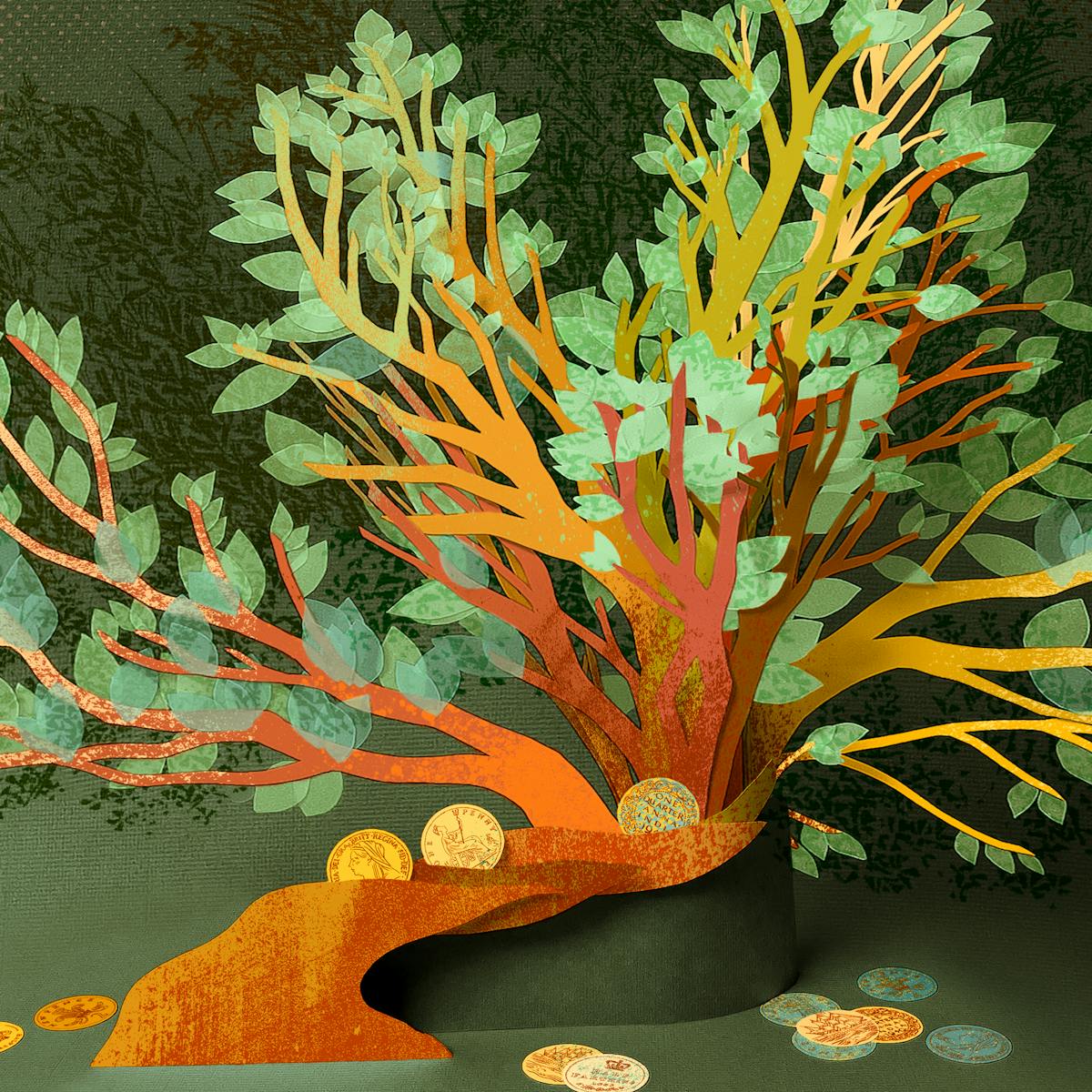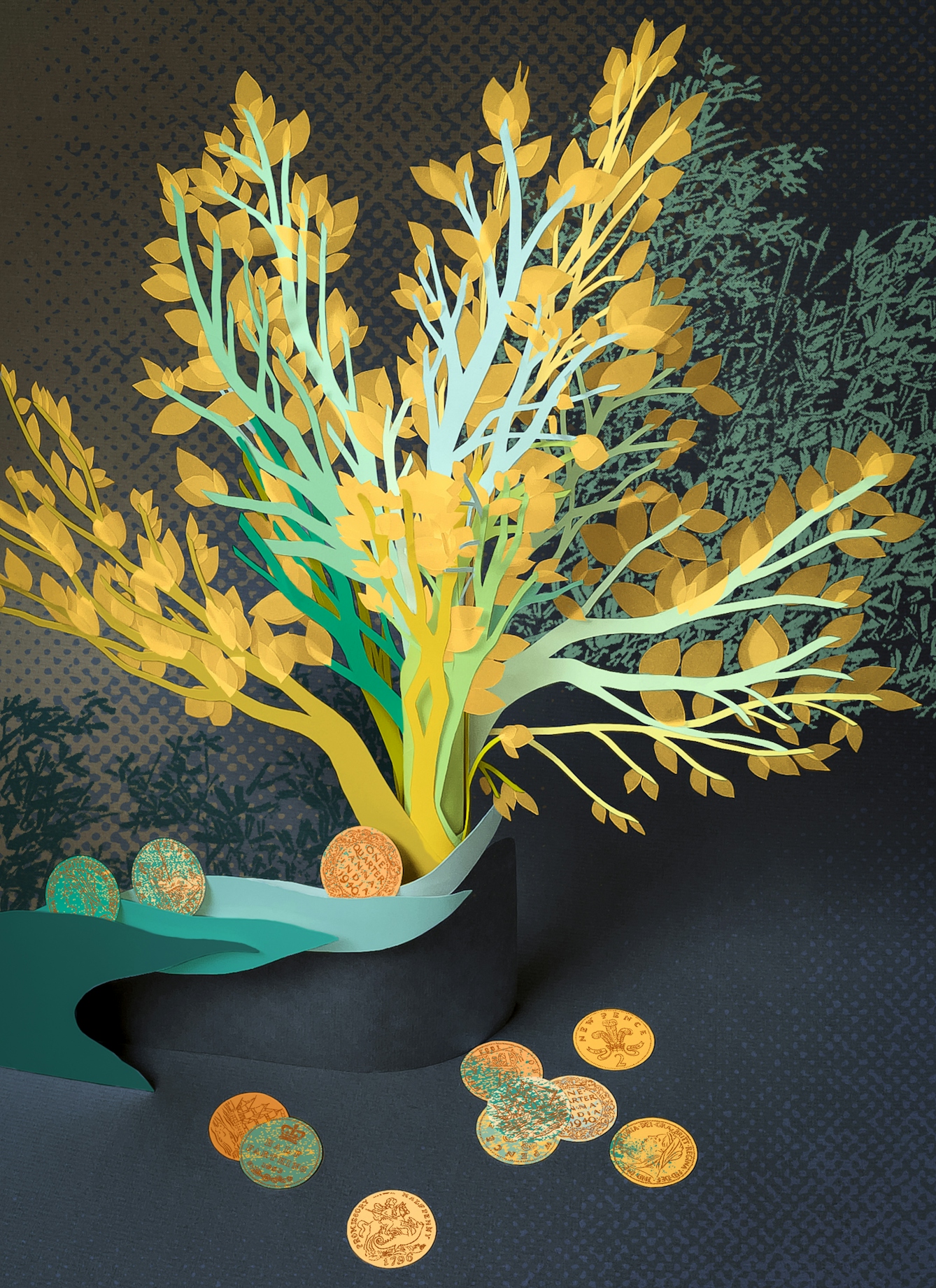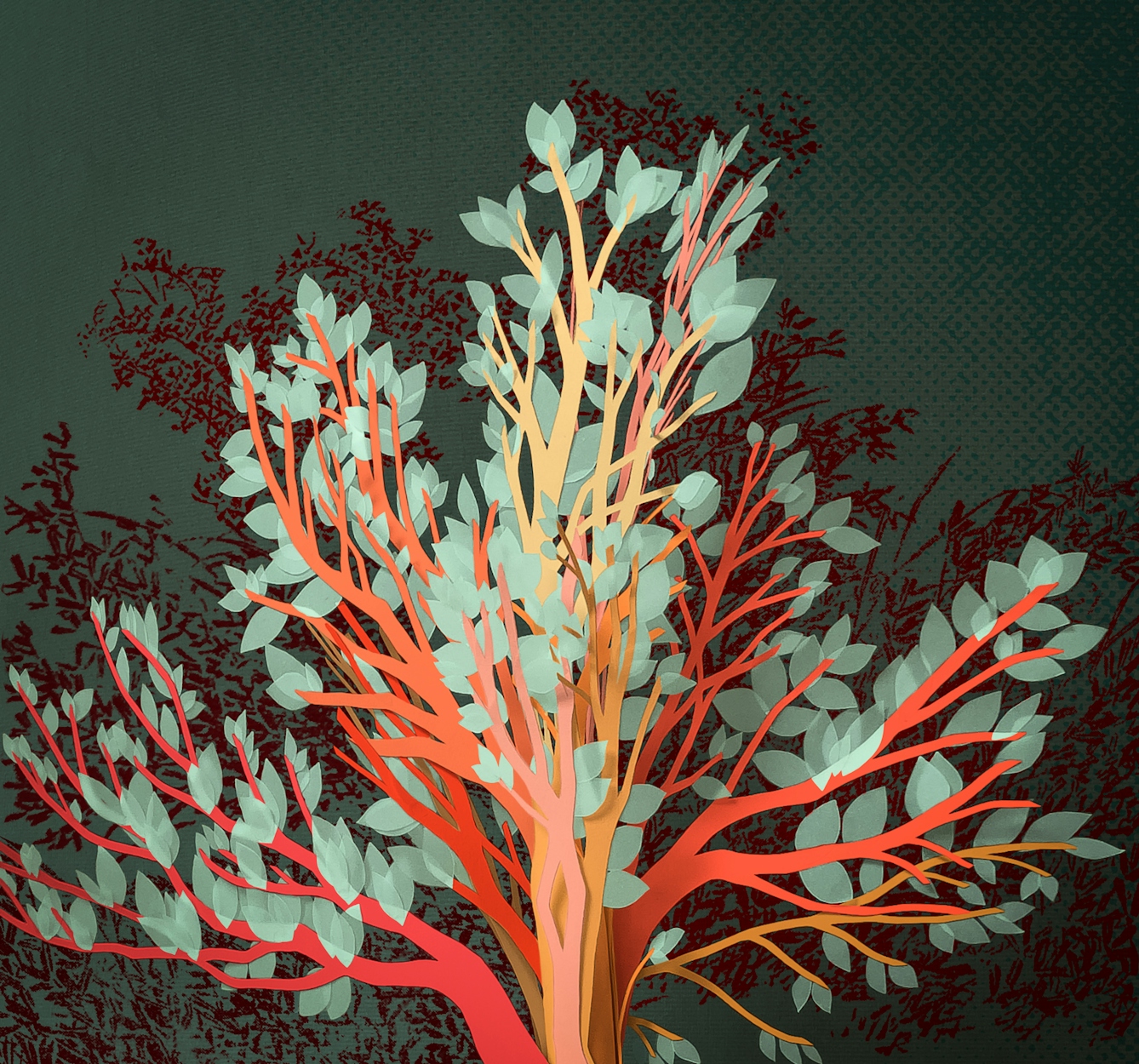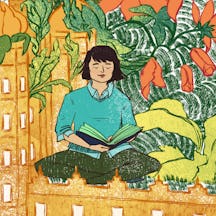Pilgrims visiting a stick-like tree on a tiny, mid-loch island in the Northwest Highlands of Scotland will have, most likely, travelled for several hours to get there, undertaking the last leg by boat. Once the supposed source of cures for mental ill health, the tree is itself in frail condition, having had hundreds of coins pushed into its bark. But it’s still worth a lengthy journey for hopeful wish-makers.

I count 1,442 wishes. Copper pennies, wearing their age in the blue-green patina of verdigris, blister the tree. Other coins, recently fallen, polka-dot the ground. No doubt many more, long fallen, permeate the dirt and tangled roots beneath my feet.
It’s been a long time since the tree looked like a tree. In fact, ‘tree’ is too generous a term. It’s the bones of a tree; the fragmented skeletal remains. Not only leafless, but branchless, barkless, rootless. Lifeless.
It’s essentially a large stick, standing precariously with the aid of other sticks: dutiful crutches, equally lifeless. And yet together they make a monument so steeped in history (literally: the ‘tree’ is bristling with coins), that anyone casually passing would stop in their tracks.
Not that anybody would casually pass. We (and by we, I mean me and the sticks) are, after all, not in the most accessible of locations. A small island, uninhabited aside from the birds, that sits in the icy waters of Loch Maree.
This is the fourth largest freshwater loch in Scotland, stretching for 12 miles across Wester Ross in the Northwest Highlands. Reachable only by hiring a boat and skipper, having driven five hours from Edinburgh, this isn’t a casual daytrip. Despite its isolation though, people have been making their pilgrimage here for centuries – long before cars and motorboats.

Once the supposed source of cures for mental ill health, the tree is itself in frail condition, having had hundreds of coins pushed into its bark.
In the seventh century, it was Irish saint Máel Ruba who is believed to have made the journey to this small, forested island. His mission to Christianise the region well underway, he sought a personal retreat.
Whether he chose this particular island because of its isolation, or because of some pre-Christian associations that could be harnessed and adapted (as saints were wont to do), we don’t know. But choose it he purportedly did, and onto that island went his hermitage. While there he is also said to have consecrated a well, and from that point on, its waters had the power to heal. Cue the pilgrimages.
For a time, the holy well specialised in “cases of lunacy”. During the 1800s, people diagnosed with mental illnesses were rowed out to the island – I suspect, often against their will. They would drink the magic waters of the well and, in thanks to Saint Máel Ruba for the cure believed to follow, a coin would be left on a nearby oak tree. The oak was incidental, a convenient altar for offerings.
But, as the story goes, when a local farmer lowered his sheepdog, believed mad, into the water, it became polluted. Grace driven from the well, ritual attention shifted to the convenient altar. The tree accepted custody of the saint’s power, and coins pressed into the bark became the means of healing. One belief held that the pilgrim’s ailment would be transferred into the tree.
Scientific advancements and swelling medical knowledge altered needs. Pilgrims still travelled to this isolated island to push their pennies into the tree, but they weren’t requesting cures for illness. They were making wishes.
When solicitor John Dixon wrote a parish history of the area in 1886, he dubbed the oak a “wishing-tree” and described the belief that “a wish silently formed when any metal article is attached to the tree will certainly be realised”.

John Dixon dubbed it a “wishing-tree” in 1886 and described the belief that “a wish silently formed when any metal article is attached to the tree will certainly be realised”.
In the footsteps of Queen Victoria
This was the custom followed by Queen Victoria, who – on one of her many tours of Scotland – was taken to see the magic wishing-tree of Loch Maree in 1877. In her diary, she recounted:
At half-past four Beatrice, the Duchess of Roxburghe, and I started on a four-oared rig, steered by Hormsby the landlord, a very nice, quiet, youngish man, and rowed to the Isle of Maree… The boat was pushed onshore, and we scrambled out and walked through the tangled underwood and thicket of oak, holly, beech, etc., which covers the islet, to the well, now nearly dry which is said to be celebrated for the cure of insanity. An old tree stands close to it, and into the bark of this it is the custom, from time immemorial, for everyone who goes there to insert with a hammer a copper coin, as a sort of offering to the saint… We hammered some pennies into the tree…
Over a century later, I follow in Victoria’s footsteps. My boat is steered by Kenny, an enthusiastic copper-haired Wester Rossian. His PVC waders proved not to be entirely waterproof when he waded into the loch to detangle the anchor rope, so as soon as we reach the island and he’s shown me where to find the wishing-tree, he hangs the saturated waders over the branch of a (different) tree.
“Let me know when you’re ready to leave,” he tells me cheerfully, as he lies down on the shingle beach to bask in the weak spring sun.
Staying firmly in my woolly hat and duffel coat, I venture from the shore into the island’s wooded heart. The path I’m on is rough but well defined, carved through the forest by the feet of pilgrims. Many pilgrims, I realise, when I first see the coin-encrusted tree.
Each coin is a wish; each wish a person. Despite their tarnish, most of the coins are modern, minted in the 1970s onwards. Many are from the 2000s. The pilgrimages continue, it seems.
I guess the older coins have fallen from the tree and are now enshrouded by earth, but there are some 19th-century pennies bearing Queen Victoria’s effigy. One dates to 1875. This could have been the coin she hammered into the tree, I think, optimistic.
I imagine her standing where I’m standing, coin in one hand and hammer in the other. What would she have wished for? This woman, who had been monarch for 40 years and in mourning for her dear Albert 16 of those, was now 58 years old. What wish might she have requested of the tree?
In 1877, Queen Victoria had described it as an “old tree”. Nearly a decade later, Dixon observed that it was “nearly dead”. Today, there is no ‘nearly’ about it. Was it simply age that defeated the oak? Or, like the holy well it once guarded, was its death meted, unwittingly, by human hands?
Reverend Joseph McKenzie McPherson, writing of the tree in 1929, blamed its demise on the insertion of coins damaging the bark: “the devotion of pilgrims has proven its undoing”. This poor tree has had its fill of ailments transferred and appeals made. And now what is left of it buckles under the weight of too many wishes. I don’t add my own.
About the contributors
Ceri Houlbrook
Dr Ceri Houlbrook is a Folklore and History Lecturer at the University of Hertfordshire, where she is the Programme Leader for the Folklore Studies MA. Her primary research interests are the material culture of popular beliefs and contemporary British rituals. She channels her folklore research into creative writing, and has recently published her debut novel, ‘Winter’s Wishfall’.
Cat O’Neil
Cat O’Neil is an award-winning freelance illustrator, specialising in editorial. She studied at the Edinburgh College of Art, graduating in 2011, and has lived in Hong Kong, London, Glasgow, Lyon and Edinburgh. Her clients include the New York Times, Washington Post, WIRED, LA Times, Scientific American, the Financial Times, the Guardian/Observer, Libération and more. Her work explores the use of visual metaphors to convey concept and narrative, and combines the use of traditional and digital mediums. Much of her recent work includes the creation of 3D paper sculptures, which are made in her studio in Edinburgh.

